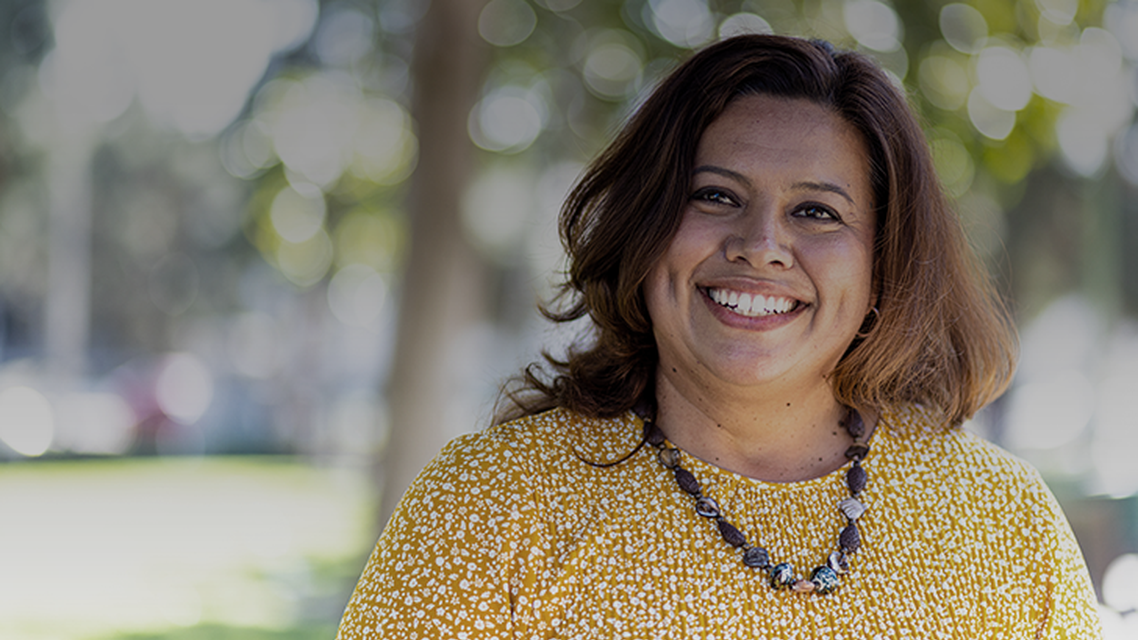Announcer:
Welcome to CME on ReachMD. This activity, titled “Examining Disparities in Diabetic Eye Health,” is provided by Prova Education.
Prior to beginning the activity, please be sure to review the faculty and commercial support disclosure statements as well as the learning objectives.
Dr. Vega:
Diabetes has reached epidemic proportions, and it’s one of the leading causes of blindness in the United States. As healthcare providers, we know that racial and ethnic minorities are disproportionately affected. So how can we help all of our patients receive the care they need to manage their disease?
This is CME on ReachMD, and I’m Dr. Chuck Vega.
Dr. Shoge:
And I’m Dr. Ruth Shoge.
I think that’s such a great question that you asked, Chuck. Before we dive into that, can you first provide some perspective on how many individuals are affected by diabetes and which races and ethnicities are most affected?
Dr. Vega:
Right. Well, diabetes is one of the most common chronic conditions I see in my safety-net clinic here in Orange County, and it is one of the most common diseases treated nationwide. So about 9% of US adults, or about 29 million folks have diagnosed diabetes, and that’s for type 2 diabetes specifically. And there’s also a large percentage with undiagnosed diabetes, that they maybe don’t have the symptomatology and/or access to care to get their diabetes diagnosed. I think one thing that’s interesting as well with diabetes, when we think about health disparities, is that diabetes is more common in all the major communities of color in the United States, so certainly the highest rates will be found in American Indian and Alaska Native communities, Hispanic communities, Black communities—but the Asian American community is also disproportionately affected compared with White individuals with diabetes. And unfortunately, particularly in communities where there is a lack of access to good quality care, particularly eye care and preventive care, many patients—far too many—actually present with retinopathy or even symptoms of vision-threatening sight loss at their presentation. So that is something I unfortunately have experience with, and it just is a call that we need to be vigilant, particularly for those folks with multiple risk factors for poor vision outcomes associated with diabetes.
So, Ruth, speaking as an optometrist, how do race and ethnicity affect patients’ risk of vision loss in your practice?
Dr. Shoge:
Thanks, Chuck. I really appreciated that you highlighted specifically which races and ethnicities that are most affected when we’re talking about vision loss related to diabetic retinopathy. And as you’d outlined, Black, Hispanic, American Indian, and some Asian subgroups consistently have the worst outcomes in vision loss. But, you know, a reason for this—and again, that you mentioned—is the lack of screening and early detection, and that’s really what’s going to provide the best outcomes in any patient that ends up having diabetic retinopathy. And so because there are less screening opportunities or a lack of awareness or education that these screenings and early detection is available and very important in the overall care of a patient, you know, that’s one of the things that we do want to take the time to highlight in these groups, and we see it does make a big difference.
We do have to keep in mind that race and ethnicity is only one factor that plays a role in vision loss when we talk about these outcomes, and so some of the other factors include social determinants of health and how those things can interplay with the race and ethnicity factor. And so there are 5 broad categories of social determinants of health, and they include economic stability, education, neighborhood—transportation availability, for example, and the safety of the neighborhood—the social support a patient may have, and of course, access to healthcare and the quality of care that’s received. So all of these things can play a role in how we see diabetes affect vision and vision loss.
So as a family medicine practitioner, Chuck, what do you see as your role in improving vision outcomes in patients with diabetes?
Dr. Vega:
Well, I love your lens of looking at this from a health equity perspective, and I use “lens” intentionally because you’re an optometrist.
It does often start with us in primary care, but it also—I’d love to hear about your perspective in terms of many patients present for a routine eye screening for myopia, say, or to get a check for their glasses, and lo and behold, they need a more full screen, particularly for the presence of retinopathy. For me, it’s about getting those patients in to see you as soon as possible. So remember, for folks with type 2 diabetes, at the time of diagnosis they should be referred for a dilated eye exam and then followed up annually thereafter. For type 1 diabetes, you can delay for 5 years after the diagnosis, but not everybody should get that delay. If a patient’s having multiple symptoms, they’re kind of not really in the screening mode anymore. They’re in the symptomatic phase, and so therefore I’m fine with sending somebody early if they develop eye symptoms, particularly, you know, acute-onset symptoms that are more severe, that patient needs to be seen right away.
I think the only other thing I’d mention is that I’m providing holistic care for patients, so it’s about controlling A1c and getting them to eye care, but it’s also about controlling blood pressure. There’s evidence that using statins to help control cholesterol can improve retinal outcomes, or at least it’s associated with improved retinal outcomes in observational research. The stuff that we’re doing that’s good for cardiometabolic disease among folks with diabetes is also going to be effective in improving their retinal outcomes as well.
And so, yeah, I would love your take, Ruth, as an eye care professional. What are you doing on your end to improve vision outcomes?
Dr. Shoge:
Great. Thanks so much, Chuck. So what we’re doing, or what I’m doing as an eye care provider is, you know, a lot of it is just educating the patient, educating their support system. Depending on the population that you work with, they may come in with a family member or friend or neighbor that might help them through the exam, maybe just to get them to and from the exam, especially if they get dilated at the exam. And so, you know, that part of it is the key part, but that’s really at the patient level, is really understanding what their needs are, including transportation, how we can help them and support them in accessing the healthcare system. And as you mentioned earlier, that I really do have a focus on health equity. It’s a big part of my practice, and it’s a big part of what I think influences outcomes at the end of the day. So from the provider level, I think offering options that do make it easier for patients to access the system, including telemedicine, putting care where the patients are, which makes it easier for them to get to us, is going to be a very important consideration moving forward in the healthcare system. And so community health centers or federally funded health centers are an important component because we have a place, then, in the communities where people live to give them information and care sooner rather than later, before that vision loss starts to occur. Because as you had mentioned earlier, diabetic retinopathy in diabetes is asymptomatic until it becomes symptomatic, you know. Once that happens, we’re in a different state of affairs.
So, you know, those are all the things that I’m doing, but also how we’re looking at taking care of people, how are we taking care of communities, and how all of this is integrated. So coming out of the pandemic, I think we all got a very quick training in telemedicine, but I think that’s just going to be great for patients moving forward in terms of access.
And another thing coming out of the pandemic is a lot of us have been getting a lot more bias awareness training, which I think is also going to be helpful in just how we interrelate with our patients, with our communities to, again, reduce any kind of barrier that’s going to prevent them from being able to get the kind of care that they really need.
Dr. Vega:
Those are really excellent points. Thank you for all the great work you’re doing. I agree. Anything that can make care more efficient, it’s not just important for the patient, because they have their own schedules and their own goals, but a lot of times, patients need a lot of support. They need rides to and from clinic, especially if they’re getting dilated eye exams or eye treatments that, you know, that can be really something that not just affects them but their whole families. If they’re from a lower resource community where, gosh, if you miss, you know, that day of work, that may be your last day at work. It becomes even more imperative to make that care more efficient.
And one thing I really like that I wish I had in my center would be some kind of teleophthalmology where we could do screening using a specialized camera in our center. Providing point-of-care testing is a great way to screen if you can do it. And if you actually bill for this, it’s just the up-front costs are fairly high, but it could really help increase the number of folks screened, and particularly from those communities where it’s really needed most, where we see the greatest disparities.
For those of you who are just tuning in, you’re listening to CME on ReachMD. I’m Dr. Chuck Vega, and here with me today is Dr. Ruth Shoge. We’re just about to discuss the disparities in eye health among individuals with diabetes, and how we as practitioners can address them.
And so, Ruth, in keeping with that idea of increasing efficiency for patients, I know that there are some different forms of anti-vascular endothelial growth factor, or anti-VEGF, treatments that are coming potentially down the line which could be more durable and space out treatment. Is that going to be a game changer for your practice? What do you think?
Dr. Shoge:
I think anything that reduces the burden for the patient, meaning they have to come into an office less frequently, which means they have to take, you know, fewer days off from work, perhaps require less assistance, and ultimately it’s going to be less expensive for them, anything that will provide that, again, barrier-reducing, is going to be absolutely a game changer for patients and very much needed in the landscape and something that we have to offer the patient as accessible treatment options.
Dr. Vega:
Well, I think there’s certainly cause for optimism, and particularly when we’re all working together with our patients, I think we can really make an impact on this important disease entity.
With that in mind, Ruth, any final takeaways for our audience today?
Dr. Shoge:
Yeah, I think it’s easy for providers to really just be overwhelmed—providers and patients, to be honest—to be overwhelmed in the healthcare landscape and think that one person isn’t capable of making a significant change. But we can. We can make change, and I think as a provider we have to remember to center the patients, center their care and make sure that the care that we provide is accessible, understandable, and free of bias and they’re given options.
Dr. Vega:
Great points. And I would just say, yeah, we want to take the moment. When the moment comes, step up to that moment and get the patient referred or get them examined for the possibility of diabetic eye disease. I think that’s really important, so usually the first visit—this just happened to me this morning. New case of type 2 diabetes, straight-off referral to ophthalmology was completed. And if the patient doesn’t go, I ask about what happened, what were some of the barriers? Let’s try to work around those, and we’re going to try again.
Just don’t give up because screening saves lives, saves vision, ultimately saves important function, critical function for patients.
Unfortunately, that’s all the time we have for today, Ruth. Thank you for these wonderful insights. It was great speaking with you today.
Dr. Shoge:
Thank you so much, Chuck. It was great to be here.
Announcer:
You have been listening to CME on ReachMD. This activity is provided by Prova Education.
To receive your free CME credit, or to download this activity, go to ReachMD.com/Prova. Thank you for listening.

















Facebook Comments